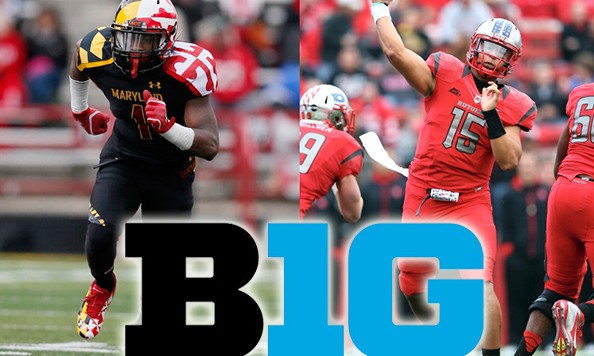There’s nothing like having a smooth $1.5 billion in your pocket, at least I’d assume. If you ever get there, good on you.
Fox and the Big Ten agreed to a $250 million annual deal for the next six years, as well as half of the league’s media rights, allowing the network to broadcast 25 football games and 50 basketball games from the conference every year during that time span. That comes out to a pretty cool $3.3 million per contest for the Big Ten.
While it’s a short deal and will take some games off ESPN and CBS, the Big Ten, for its end, bought itself some flexibility. The contract will expire before any other Power 5 conference’s television deal will, and as we’ve seen in the constantly-changing landscape of college football, moves are made to only increase the want for the sport (other than, you know, the idiotic New Year’s Eve CFB Playoff tilts).
For Fox, the more Big Ten, the better. Fox has been positioning itself to battle the evil empire of ESPN with the introduction of Fox Sports 1, but for the college football world, that’s been like Natty Ice entering a world beer tasting contest. Whether people love, hate, or are indifferent on the Big Ten, it gets eyeballs. Wherever teams like Michigan and Ohio State are, people go.
Wherever teams like Wisconsin, Nebraska, Michigan State, and Penn State are, most people go.
The positive for Fox is that it gets guaranteed major eyeballs on its channels, because people will watch some of these major Big Ten programs on the “Home Shopping Network” if that’s where the games appear.
The positive for the Big Ten is that the deal is short. A longer deal for more money would have been what folks assumed is ideal, but a six-year deal allows flexibility within a market change. Let’s say the market for the NFL changes in some way. All of those contracts the NFL has with NBC, ESPN, and CBS run out after the 2022 season.
The deal comes out to around $17.6 million per school each year, now that the Big Ten has 14 teams. That’s from Fox, not overall. By contrast, that is near what the Pac-12 will get from all of its television rights, not just one network, in 2019.
The reality is that the gap betwixt the Big Ten/SEC and the remainder of the conferences continues to widen, mostly because of savvy deals like this one, which allows both flexibility and a windfall of money for member schools. This is likely what programs like Nebraska, Rutgers, and Maryland signed up for when joining the conference.
It’s also important to note that the Fox deal is half of the Big Ten television rights. There is that other 50 percent out there, and while the immediate reaction is that the Big Ten will suffer with ESPN and CBS, the end game is money, not narrative. College football in particular is in a place where if you win enough games, you’re getting into the dance.
Big Ten fans won’t enjoy the residual effect of Fox being more of a player in the conference than ESPN, because they can expect more overt pro-ESPN contracted conference propaganda, but for the suits who make the deals, money and flexibility are a lot more important than what 20-somethings on Twitter are chirping about at noon on a Saturday.
If the goal in this deal was more automatic exposure for Fox, attached to more money and flexibility for the Big Ten, everyone wins. The ashes on how good or bad of a deal this ends up being probably don’t end up getting collected until we see where the sport goes, but the Big Ten set itself up nicely for the future.
Fox set itself up nicely for the present. Sometimes, everyone wins, which is how negotiation should probably, ideally, go.

